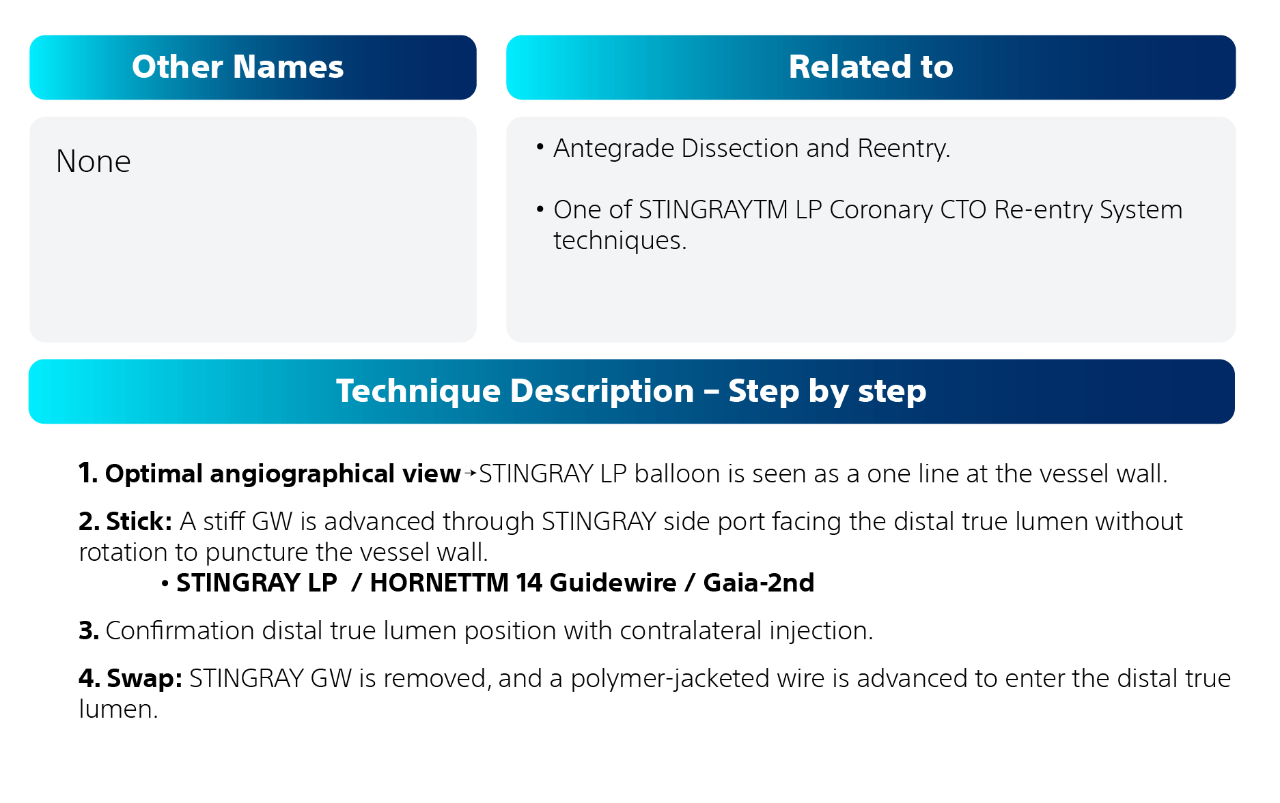Stingray LP Catheter CONTRAINDICATIONS: Not intended for use in the cerebral vasculature. Unprotected left main coronary artery. Coronary artery spasm in the absence of a significant stenosis.Stingray Guidewire CONTRAINDICATIONS: None known.WARNINGS: Only physicians thoroughly trained in interventional procedures should use the Stingray LP Catheter and Stingray Guidewire.Stingray LP Catheter WARNINGS: To reduce the potential for vessel damage, the inflated balloon should only be used in vessels that are ≥2.5 mm in diameter as measured proximal and distal to the inflation site. Balloon pressure should not exceed the rated burst pressure. Use of a pressure monitoring device is recommended to prevent over pressurization. Use only the recommended balloon inflation medium. Do not advance or retract the Stingray LP Catheter unless the balloon is fully deflated under vacuum. Pay special attention when directing a guidewire out a side port. Never push, withdraw or torque components that meet resistance. Device kinking/breaking or vessel damage may occur. Fluoroscopy should always be used to aid device manipulation.PRECAUTIONS: In coronary applications, the Stingray LP Catheter and Stingray Guidewire should only be used in hospitals where emergency coronary bypass surgery can be immediately performed in the event of a potentially injurious or life threatening complication. Before insertion of the catheter and/or guidewire, administer appropriate anticoagulant and vasodilator therapy. The Stingray LP Catheter and Stingray Guidewire should be handled with care. Prior to use and during the procedure, inspect the packaging and catheter/guidewire for bends, kinks, or other damage. Discontinue use if the catheter/guidewire becomes damaged.Stingray LP Catheter PRECAUTIONS: Do not expose to organic solvents. Always use wire support for advancement, manipulations, and withdrawal of the Stingray Catheter. The Stingray Catheter should only be manipulated under fluoroscopic observation.ADVERSE EVENTS: Potential adverse events include, but are not limited to, the following: Acute myocardial infarction, Vessel trauma requiring surgical repair or intervention, Hemorrhage or hematoma, Artery spasm, Embolism, Stroke, Neurological deficit, Drug reactions, allergic reaction to contrast media, Infection, Recurrence of angina, Chest discomfort, Bleeding from the catheter insertion point, Bruising at the catheter insertion point, Hematoma at the catheter insertion point, Ischemia due to restenosis of the dilated segment, Ventricular failure, Dissection or thrombosis with vessel occlusion, Arterial Perforation (Surgery required), Blood Toxicity, Toxicological response, Fever, Infection at skin puncture site, Deterioration of kidney function/kidney failure, Provocation of heart attack/stroke, Surgery to recover failed devices, Surgery to repair a failed procedure, Prolonged procedure time, Occlusion of a branch of coronary artery, Myocardial infarction with release of CK-MB into circulation, Death, When failures of PTCA occur, they are often treated using coronary artery bypass surgery.

